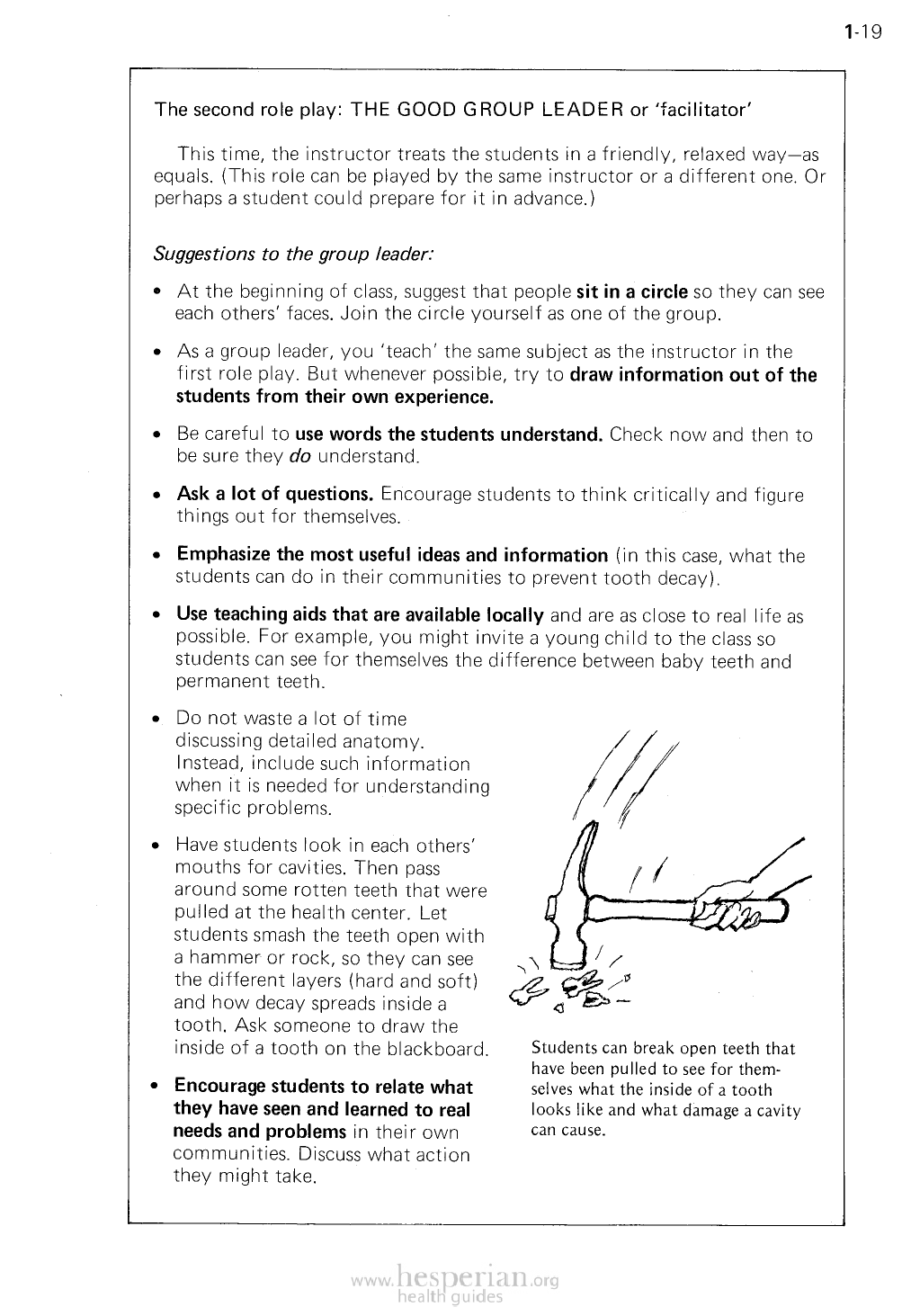
1-19
The second role play: THE GOOD GROUP LEADER or ‘facilitator’
This time, the instructor treats the students in a friendly, relaxed way—as
equals. (This role can be played by the same instructor or a different one. Or
perhaps a student could prepare for it in advance.)
Suggestions to the group leader:
• At the beginning of class, suggest that people sit in a circle so they can see
each others’ faces. Join the circle yourself as one of the group.
• As a group leader, you ‘teach’ the same subject as the instructor in
the first role play. But whenever possible, try to draw information
out of the students from their own experience.
• Be careful to use words the students understand. Check now and
then to be sure they do understand.
• Ask a lot of questions. Encourage students to think critically and figure
things out for themselves.
• Emphasize the most useful ideas and information (in this case,
what the students can do in their communities to prevent tooth decay).
• Use teaching aids that are available locally and are as close to real life as
possible. For example, you might invite a young child to the class so students
can see for themselves the difference between baby teeth and permanent
teeth.
• Do not waste a lot of time
discussing detailed anatomy.
Instead, include such information
when it is needed for understanding
specific problems.
• Have students look in each others’
mouths for cavities. Then pass
around some rotten teeth that
were pulled at the health center.
Let students smash the teeth open
with a hammer or rock, so they can
see the different layers (hard and
soft) and how decay spreads inside
a tooth. Ask someone to draw the
inside of a tooth on the blackboard.
• Encourage students to relate what
they have seen and learned to real
needs and problems in their own
communities. Discuss what action
they might take.
Students can break open teeth
that have been pulled to see for
themselves what the inside of a tooth
looks like and what damage a cavity
can cause.